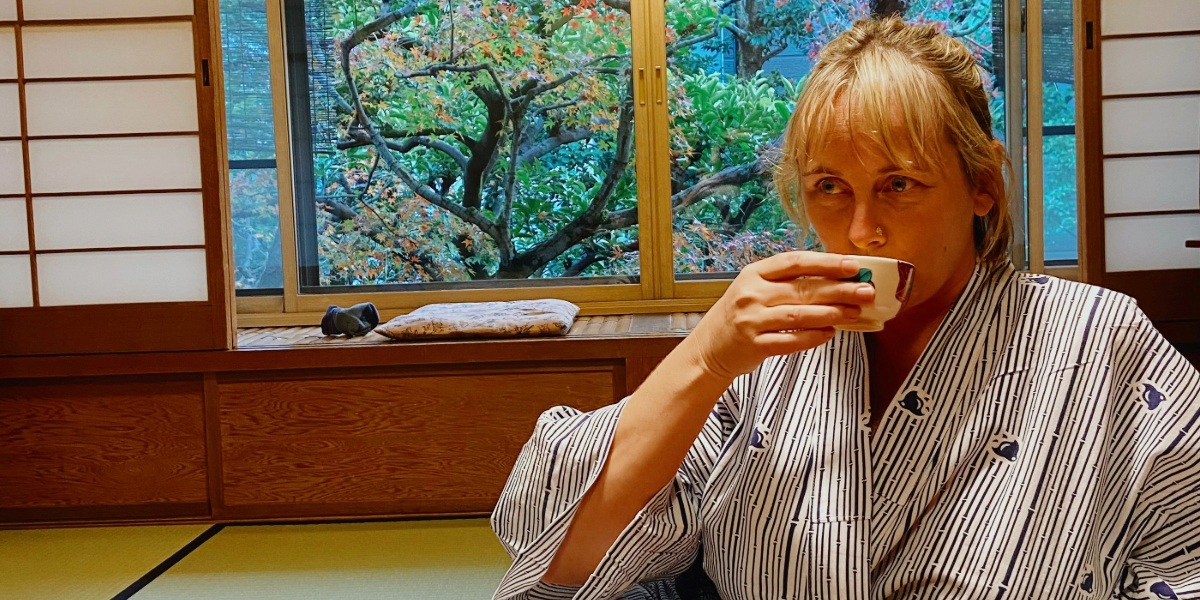Being exposed to Japanese philosophy and the dedication of the teachers and students at the Kawashima Textile School are just some of the highlights of a recent trip to Japan by local artist Janna Hayes.
Armidale-based Hayes was the recipient of the 2023 Helen Dangar Memorial Art Bursary at NERAM, which is a $3000 grant given out every year to a New England artist who wants to improve their skills, learn new techniques or broaden their artistic horizons.
Hayes used the bursary to travel to Japan to attend the Kawashima Textile School on the outskirts of Kyoto.
Along with some other Australian weavers, Hayes was taught tapestry weaving by Sensei Kondo.
“It was wonderful to learn traditional techniques from a master craftsman and to create connections with Australian contemporaries,” said Hayes.
“In Japan, tsuzure-nishiki or tapestry weaving is an artform of cultural significance with a history that stretches back to the late 15 th Century.”
“They were usually woven with silk thread and used to make robes, obi and wrapping. Our teacher Hirokazu Kondo studied himself at Kawashima and was involved in the restoration of the “Chōjū Monyō Jinbaori [bird and beast pattern battle surcoat], which is said to have been used by Toyotomi Hideyoshi (1537-1598).”
Hayes said her first design sent to the school for approval before she left Australia, was deemed “too complicated for her skill level”, so she went back to the drawing board and created a butterfly print, like a Rorschach inkblot which was approved.
“Tapestry weaving is not a fast art,” said Hayes.
“We worked from 8.30am to 5.30pm with a short lunch break for five consecutive days to each create a 50cm x 50cm tapestry. Sensei Kondo would visit us each and with the help of interpreter Harumi
gave gentle guidance.”
“My usual art practice is to paint, and I like to paint in short fast bursts. This is in stark contrast to the slow, methodical process of weaving, where rushing usually means you need to go back and start again.”
“That is exactly why weaving is such a good counterbalance to my usual practice, it forces me to slow down and be considerate. I wanted to travel to Kawashima to expand upon my own self-taught skills and have a chance to work at a seated loom.”
“I also wanted to expand my own practice at home to be able to create using wool, a material that is so integral to the New England region. I hope to be able to tell a story of identity through my work, and using materials relevant to that identity feels important.”
On her final day at Kawashima – “cross-eyed and complaining of a sore back” – Hayes and other students were taken across the school to the “factory,” home to the largest loom in the world. Twenty metres long, it takes as many weavers, all working in unison, to create opulent theatre curtains.
“We were able to view the factory floor from above and the sight of something so beautiful, and so large, made entirely by hand brought us all to tears,” said Hayes.
“It was breathtaking and brought home the deep respect with which the art is understood in Japan. I was able to talk with one of the weavers who showed me how they each keep a small file next to them, with which they file their nails into tiny combs allowing them to brush down the fine silk threads.”
“By that last day, my focus was waning, and I was dreaming of the 12-course Japanese degustation that awaited me in my ryokan that evening. I made a terrible rookie error and sped up which resulted in the top corners of the work tightening and pulling in. A lesson learnt. Nonetheless I got the nod from Sensei Kondo who was pleased with the concept, the colour choices, and the final piece.”
Hayes said she was extremely grateful for the opportunity afforded to her by receiving the Helen Dangar Memorial Art Bursary and NERAM.
“The bursary supported me financially to travel to Japan and expand my practice,” she said.
“In addition to the financial boost, it was very special to be able to travel and learn in honour of someone special and my heartfelt thanks goes to the Dangar family for that opportunity.”
Like what you’re reading? Support The New England Times by making a small donation today and help us keep delivering local news paywall-free. Donate now.

